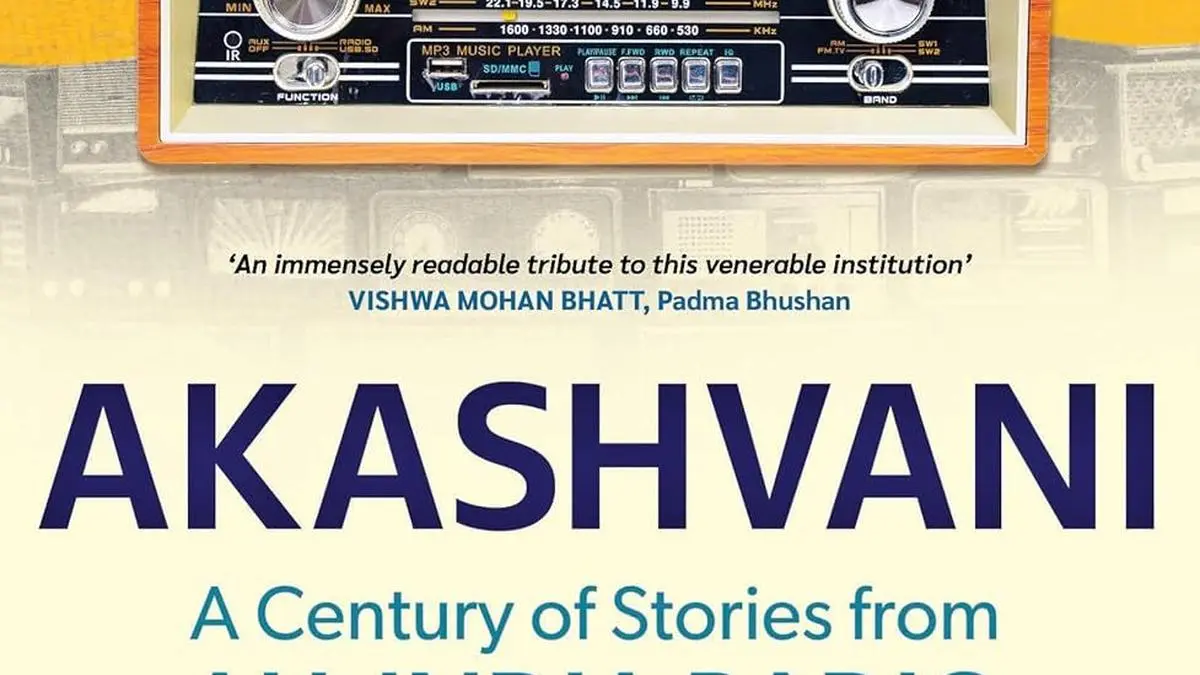Science
All India Radio Reflects on a Century of Broadcasting Legacy

All India Radio (AIR) has recently been the subject of renewed interest with the publication of a new book, *Akashvani: A Century of Stories from All India Radio*, by authors Vikrant Pande and Neelesh Kulkarni. This comprehensive work takes readers on a nostalgic journey through the golden era of radio, detailing how AIR shaped the cultural landscape of India over the last century.
For those who grew up in the 1970s and earlier, the memories of listening to AIR are rich with sentiment. The dulcet tones of Ameen Sayani on Radio Ceylon or the engaging programs like *Manchahe Geet* and *Chaya Geet* on AIR’s Vividh Bharati filled homes with music and stories long before the advent of television. Many families relied on the radio for entertainment, especially in households without a TV until the 1982 Asian Games.
Today, radio listening is often relegated to commutes, with many tuning in during their drives. The allure of classic Western and Carnatic music remains a comforting presence on the radio, yet the nostalgic connection to AIR’s past continues to resonate. As Pande and Kulkarni share in their book, the legacy of AIR is woven into the fabric of Indian society, with personal stories that highlight its impact.
Behind the Scenes of AIR’s History
The authors have conducted extensive interviews with former AIR staff, illuminating the dedication of the institution’s early newscasters. One notable story involves Sushil Jhaveri, who ensured that badminton star Prakash Padukone correctly pronounced his surname before his historic win at the 1980 All England Championships. This attention to detail exemplifies the professionalism that characterized AIR’s broadcasting standards.
The book also reveals intriguing anecdotes about AIR’s development, including the origin of its name. In 1936, during a banquet, Lord Linlithgow suggested the name “All India Radio” after a conversation with Lionel Fielden, an early recruit from the BBC, who found the original title cumbersome. The simplicity and elegance of this new name have since become synonymous with Indian broadcasting.
Among the many stories shared, one highlights the renowned musician Pandit Jasraj, who once rejected a contract he deemed inadequate. After a stern conversation with the station director, he realized the importance of respecting the offer — a moment that left a lasting impression on him.
Another charming tale comes from the small town of Jhumri Telaiya, where AIR’s *Manchahe Geet* and *Aap ki Farmaish* programs brought the community together. Residents formed clubs to listen to music and would send their song requests by the sackful, showcasing the unifying power of radio.
The Future of All India Radio
While the book chronicles AIR’s rich history, it also raises questions about its future in a changing media landscape. With the rise of private FM channels, television, and digital streaming platforms, AIR faces significant challenges in capturing the attention of modern audiences.
Nevertheless, the authors express optimism for AIR’s sustainability. The integration of FM radio into mobile devices has transformed the medium into a portable entertainment option. Additionally, AIR is digitizing its extensive archives and making content available on platforms like YouTube and through the NewsonAir app.
To remain relevant, AIR will need to innovate its approach. The authors suggest that improving technology interfaces, marketing strategies, and addressing staffing issues will be crucial for the organization’s survival. As they conclude, the question remains: Can this venerable institution adapt and thrive in the face of evolving media consumption habits?
With a rich legacy and a commitment to evolve, All India Radio continues to hold a special place in the hearts of its listeners. The stories captured in *Akashvani* serve not only as a reminder of the past but as a call to embrace the future of broadcasting in India. The book was published on August 25, 2025, ensuring that the conversation about AIR’s past, present, and future continues.
-

 World5 months ago
World5 months agoSBI Announces QIP Floor Price at ₹811.05 Per Share
-

 Lifestyle5 months ago
Lifestyle5 months agoCept Unveils ₹3.1 Crore Urban Mobility Plan for Sustainable Growth
-

 Science4 months ago
Science4 months agoNew Blood Group Discovered in South Indian Woman at Rotary Centre
-

 World5 months ago
World5 months agoTorrential Rains Cause Flash Flooding in New York and New Jersey
-

 Top Stories5 months ago
Top Stories5 months agoKonkani Cultural Organisation to Host Pearl Jubilee in Abu Dhabi
-

 Sports4 months ago
Sports4 months agoBroad Advocates for Bowling Change Ahead of Final Test Against India
-

 Science5 months ago
Science5 months agoNothing Headphone 1 Review: A Bold Contender in Audio Design
-

 Top Stories5 months ago
Top Stories5 months agoAir India Crash Investigation Highlights Boeing Fuel Switch Concerns
-

 Business5 months ago
Business5 months agoIndian Stock Market Rebounds: Sensex and Nifty Rise After Four-Day Decline
-

 Sports4 months ago
Sports4 months agoCristian Totti Retires at 19: Pressure of Fame Takes Toll
-

 Politics5 months ago
Politics5 months agoAbandoned Doberman Finds New Home After Journey to Prague
-

 Top Stories5 months ago
Top Stories5 months agoPatna Bank Manager Abhishek Varun Found Dead in Well









